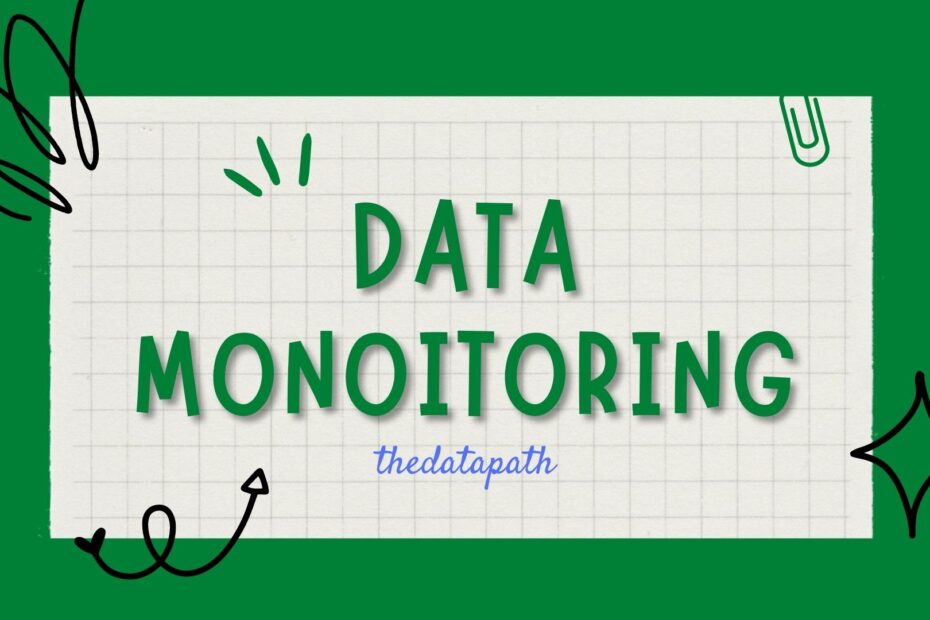Data monitoring tracks and analyzes data to identify trends, patterns, and issues. It is an essential aspect of data quality, as it helps organizations to ensure that their data is accurate, complete, and consistent. Many data types can be monitored, including historical data, new data, and data from various sources and types.
Data monitoring is a time-consuming process, but it is essential for the success of many organizations. Data engineers, DevOps engineers, and other professionals use data monitoring tools and systems to monitor data quality, identify issues, and improve data quality. By using the right tools and processes, businesses can ensure that their data is accurate, complete, and consistent and that they can make better, more informed decisions.
What is data monitoring?
Data monitoring is regularly checking and evaluating the quality of data within an organization. It involves using various tools and techniques to ensure that data is accurate, complete, and consistent and that it meets the needs of the business. Data monitoring is essential for various reasons, including improving data quality, identifying potential problems in a data pipeline, and enabling enterprises to make informed decisions based on reliable data.
High-quality data is essential for making informed decisions, and data errors or issues can lead to incorrect conclusions or actions. Data monitoring helps to identify and correct errors or problems in real time, ensuring that the data being used is accurate and up-to-date.
What are the three types of monitoring?
There are many different types of data monitoring, but some of the most common include the following:
- Data quality monitoring: This involves monitoring data quality to ensure that it is accurate, complete, and consistent. This can be done using data quality monitoring tools to identify issues such as errors, inconsistencies, or missing values.
- Data security monitoring: This involves monitoring data to ensure that it is secure and protected from unauthorized access or tampering. This can include monitoring data access, transmission, and storage to identify potential security risks.
- Data health monitoring: This involves monitoring the overall health of data within an organization, including its accuracy, completeness, and consistency. This can be done using data quality metrics, such as accuracy, completeness, and consistency, to measure the health of the data and identify any potential issues.
Elements of an automated data monitoring system
An automated data monitoring system typically consists of several key elements, including:
- Data collection: This involves collecting data from various sources, including databases, sensors, and other devices.
- Data governance: This involves establishing rules and processes for managing data, including how it is collected, stored, and used.
- Data quality monitoring tools: These special software tools monitor data quality, identify any issues or problems, and alert users to potential issues.
- Data analytics involves using statistical and machine learning techniques to analyze and understand data patterns, trends, and relationships.
- Data visualization: This involves presenting data in a clear and easily understandable format, such as graphs, charts, or maps. It also makes it easier for users to understand and interpret the data. Tableau is a good data visualization tool.
How does data monitoring work?
The data monitoring process typically involves several key steps, including:
- Collecting data: Compiles data from various sources, such as databases, sensors, and other devices.
- Cleaning and organizing data: Clean and organize data to remove any errors or inconsistencies and to ensure that it is ready for analysis.
- Analyzing data: Data analyses using statistical and machine learning techniques to identify patterns, trends, and relationships.
- Visualizing data: Data present in a clear and easily understandable format, such as graphs, charts, or maps, to make it easier for users to understand and interpret the data.
- Identifying issues and problems: Data monitoring tools identify any issues or problems with the data, such as errors, inconsistencies, or missing values.
- Alerting users: If user detect any issues or problems, there get an alert to take action to address the issue and improve the quality of the data.
Why is data monitoring critical?
One of the main benefits of data monitoring is that it helps organizations to improve their data quality. Businesses can identify and fix data quality issues, such as errors and inconsistencies, leading to better decision-making and more accurate analytics by monitoring data quality metrics and data quality monitoring tools.
Another critical aspect of data monitoring is security. Organizations can detect and prevent potential data breaches by monitoring data health and using data monitoring software and ensure data protection. This is especially important in today’s digital landscape, where data security is a top concern for many businesses.
Data monitoring also plays a crucial role in business agility. By providing visibility into data quality and actionable information, data monitoring systems can help organizations make better, faster decisions and respond to changes in the market. This can be especially important for companies that rely on machine learning and anomaly detection, as these technologies require high-quality data to be effective.
Data monitoring can track the performance of systems, software, and companies by measuring key metrics and generating reports. Data monitoring is time-consuming, but it is necessary to maintain data quality over time and ensure that machine learning models trains on high-quality data.
Conclusion
In summary, data monitoring software can automate the process. It does this by setting up alerts and notifications for new data or data issues. And makes it easier to track and evaluate data. An example of data monitoring is a company tracking customer satisfaction ratings. The tool improve its products or services.
